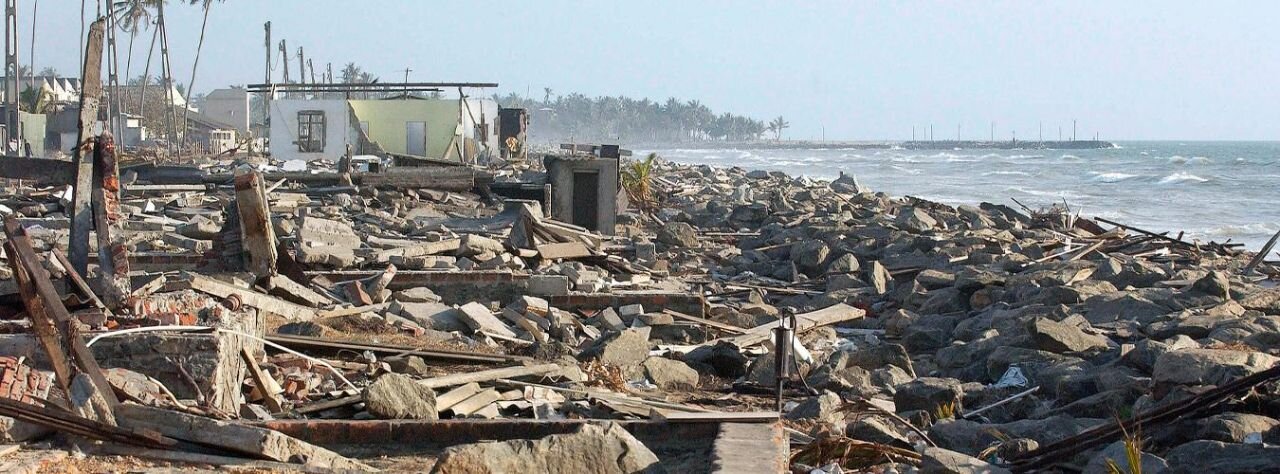World Tsunami Awareness Day: fighting inequality for a resilient future

TEHRAN- The World Tsunami Awareness Day is held annually on November 5th, encouraging all sectors of society to engage and collaborate on disaster risk reduction.
This year’s event will be held under the theme of ‘Fighting Inequality for a Resilient Future’.
A tsunami is a series of enormous waves created by an underwater disturbance usually associated with earthquakes occurring below or near the ocean.
Volcanic eruptions, submarine landslides, and coastal rock falls can also generate a tsunami, as can a large asteroid impacting the ocean. They originate from a vertical movement of the sea floor with the consequent displacement of water mass.
They are rare events, that can be among the deadliest and costliest hazards when they do happen. They affect many economic sectors, but agriculture, housing, and tourism are the most vulnerable.
Like other natural disasters, a tsunami with its unequal and unique impacts on the affected population poses a significant threat to everyone.
Specific populations such as women, children and youth, persons with disabilities, and older persons- often confront heightened challenges, both during and after a tsunami.
The main objective of World Tsunami Awareness Day is to raise consciousness about reducing the risks created by these giant waves and improving community preparedness.
Events, activities, and drills are organized globally, as a reminder of the ever-present threat of tsunamis.
This is especially important as the frequency and intensity of natural disasters are increasing and impacting coastal communities.
In the last century, only 58 tsunamis have occurred, but they have claimed over 260,000 lives. On average, each disaster has caused the death of 4,600 people, more than any other natural hazard (United Nations, 2022).
Tsunamis can be deadly, but they needn’t be. Early warning and early action are effective tools to protect people, save lives, and prevent the hazard from becoming a disaster. To be effective, tsunami early-warning systems must cover every at-risk person, they must be multi-hazard, and communities must be prepared so they can act quickly.
The activities during this observance aim to explore the relationship between tsunamis and inequality. Specifically, they focus on how inequality can make tsunamis more dangerous for certain populations and how the aftermath of a tsunami can drive vulnerable people further into poverty, thus worsening inequality.
Tsunami exercises and drills are excellent ways in which to increase tsunami preparedness and awareness of coastal communities.
Regular exercises are essential to maintain the operational readiness of response agencies for real events and are especially important because of the infrequent occurrence of tsunamis.
Exercises evaluate one's ability to respond to local, regional, or ocean-wide tsunamis. Exercises test communications, review agency standard operating procedures, and promote emergency preparedness.
Tsunami exercise
The Indian Ocean-wide tsunami exercises (IOWave) are an example in this regard. They are effective tools for evaluating the readiness of the end-to-end Indian Ocean Tsunami Warning and Mitigations System (IOTWMS) and for identifying changes that can improve its effectiveness.
The seventh Indian Ocean-wide tsunami exercise (Exercise IOWave23) was held on October 25 along the Makran coasts, southeastern Sistan-Baluchestan province.
The exercise simulated Indian Ocean countries being put in a tsunami warning situation and required each country to implement its standard operating procedures. The exercise tested preparedness for responding to tsunamis generated by seismic and non-seismic (volcanic) events.
Regular exercises are important for maintaining staff readiness for the real event. This is especially true for tsunamis, which are infrequent but require rapid response when they occur.
“The scenario simulates a magnitude 9 earthquake off the Makran coast,” IRNA quoted Ali Khoshkholq, an official with the National Institute of Oceanography and Atmospheric Sciences, as saying.
In addition to testing standard operating procedures and communication links at all levels of the warning chain, a primary objective of Exercise IOWave23 was to enhance tsunami preparedness at the community level.
It aimed to raise the level of international cooperation between the countries along the Indian Ocean as well.
This year, Iran took part in this exercise with the predicted hypothetical scenario on October 25, which simulated an earthquake with a magnitude of 9 on the Richter scale in the Makran trench of the North-West Indian Ocean, which is capable of causing fierce floods by tsunami waves.
World Tsunami Awareness Day
In December 2015, the UN General Assembly designated November 5 as World Tsunami Awareness Day, calling on countries, international bodies, and civil society to raise tsunami awareness and share innovative approaches to risk reduction.
World Tsunami Awareness Day was proposed by Japan, which due to its repeated, bitter experience has over the years built up major expertise in areas such as tsunami early warning, public action, and building back better after a disaster to reduce future impacts.
UN Disaster Risk Reduction (UNDRR) facilitates the observance of World Tsunami Awareness Day in collaboration with the rest of the United Nations system.
MT/MG
Leave a Comment